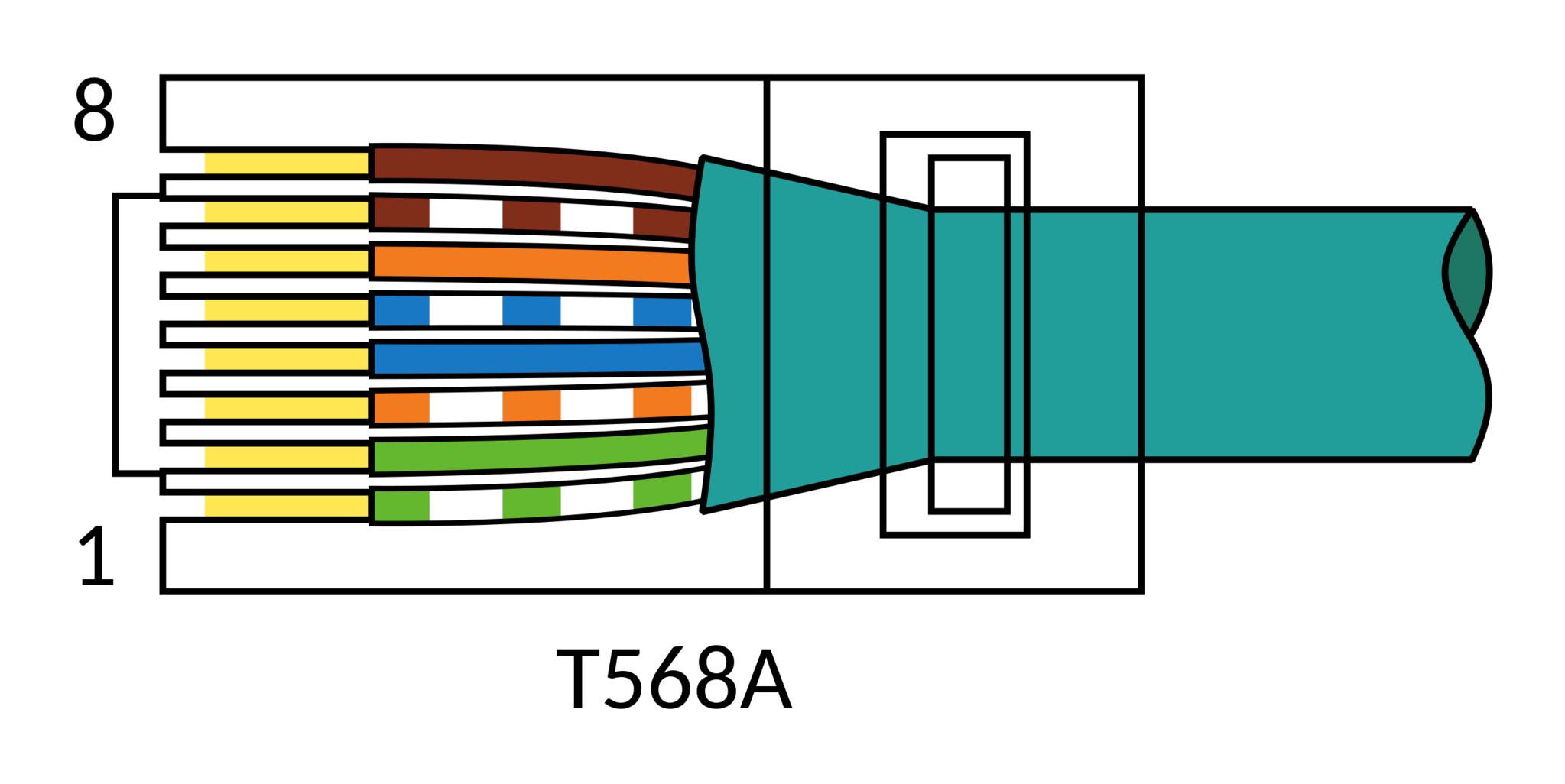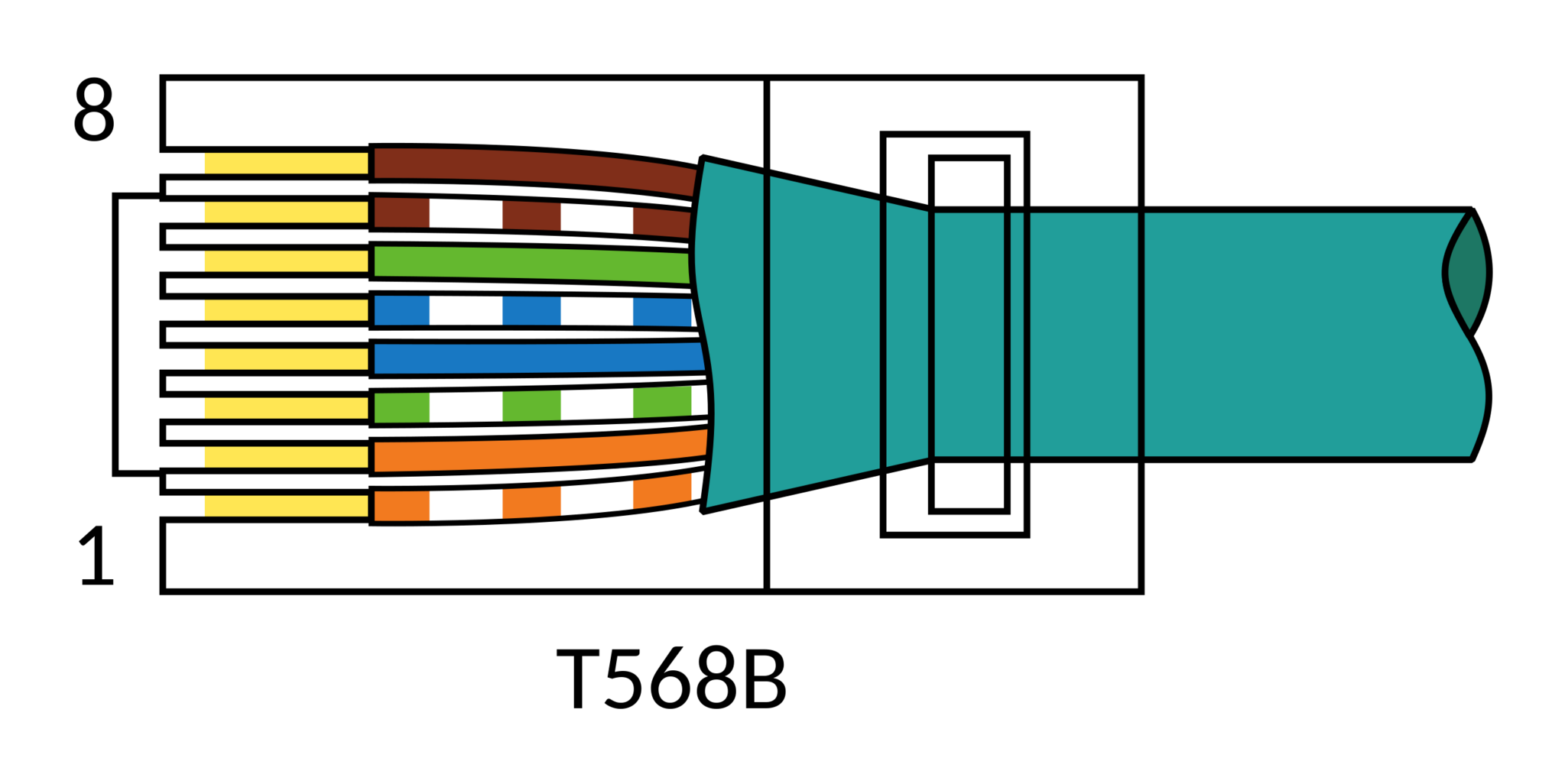1.1 Standards for Structured Cabling Systems
Basics
Cabling standards were established to help both vendors who develop devices that run on networks and the people who install and maintain the networks. In the United States, the standard is ANSI/TIA-568-C, also known as the Commercial Building Telecommunications Cabling.
Terms to Know
You should know the following terms:
- Backbone cabling
- Demarcation (Demarc) Point
- Entrance facility
- Equipment Room
- Horizontal cabling
- Intermediate Distribution Frame (IDF)
- RJ45 end cap
- Main Distribution Frame (MDF)
- Network Operations Center (NOC)
- Telecommunications Room
- Termination types: T568A and T568B
- Work Areas
Information
The Commercial Building Telecommunications Cabling standards cover:
- network components such as cable categories. You may be familiar with some cable categories such as Cat 5, Cat 6, or Cat 6e.
- defining how cables should be terminated and connected to an end cap as the wires inside the cables have to be connected to the pins in the end cap in specific orders.
Basics of Termination
These standards identify the order the colored wires should be connected to the pins in an end cap. RJ45 end cap is a common end cap many schools use. You will use one of two types of termination types: T568A or T568B. You need to know what termination type is used in your network, because if your system is all T568A and you terminate a cable with T568B, or vice versa, it might not work.


Terminating cables is covered in more detail later.
Six Components of Structured Cabling Systems
The standard also describes six subsystems for structured cabling systems. These represent areas in each of your buildings that provide specific network functionality.
- Entrance Facility: the location where your Internet provider’s connection comes into the building; it is often called the Demarcation Point, or Demarc, for short.
- Equipment Room: also called the Main Distribution Frame (MDF) or Network Operations Center (NOC) the primary area where specialized equipment for data, telephone, or other systems are housed. It often has routers, switches, and hubs. It is where the Backbone Cabling for the building terminates. It might include the Entrance Facility or the Telecommunications Room.
- Telecommunications Room: also called the Intermediate Distribution Frame (IDF) or a Telecommunications Enclosure if it is on the smaller size rooms or closets house cross-connects and patch panels and are the place where Horizontal Cabling originates and connects to the Backbone Cabling. They should be located on each floor of a building.
- Backbone Cabling: backbone cabling is the primary cabling of your network. It connects the Entrance Facility to the Equipment Rooms, often running vertically between floors. On a campus, it also includes outdoor cabling between buildings. It may also be called riser cabling.
- Horizontal Cabling: the cabling that runs horizontally through floors, ceilings, along or in walls and makes the network available to the end users through wall plates, wireless hubs, or other telecommunications outlets. It connects to the Backbone Cabling through Telecommunications Rooms or Enclosures using patch panels, switches, or hubs.
- Work Areas: this include offices, classrooms, and other places where your end users connect to your network. This is done using cables (such as those that connect computers, printers, IP phones) or through connecting to a wireless access point (which is cabled).
Images used are in the Public Domain. Created by Miha Ulanov on Wikipedia.
A: https://en.wikipedia.org/wiki/Modular_connector#/media/File:RJ-45_TIA-568A_Left.svg
B: https://en.wikipedia.org/wiki/Modular_connector#/media/File:RJ-45_TIA-568B_Left.svg
Additional Resources
Here are additional resources you may find useful:
Task/Self-Assessment
Complete the following task or self-assessment:
Access a diagram of the building you will be working in, such as a copy of the one used for emergency drills. On the diagram, identify the following locations for your network structure. If there is more than one for any these make sure to identify all of them.
- Demarcation Point/Entrance facility
- Equipment room
- Telecommunications room
- Run of the backbone cabling
- Placement of horizontal cabling - include its location (eg. floor, ceiling)
- Termination points in work areas
- Ask your tech director if there are any other important structures or pieces that should be included in your diagram
